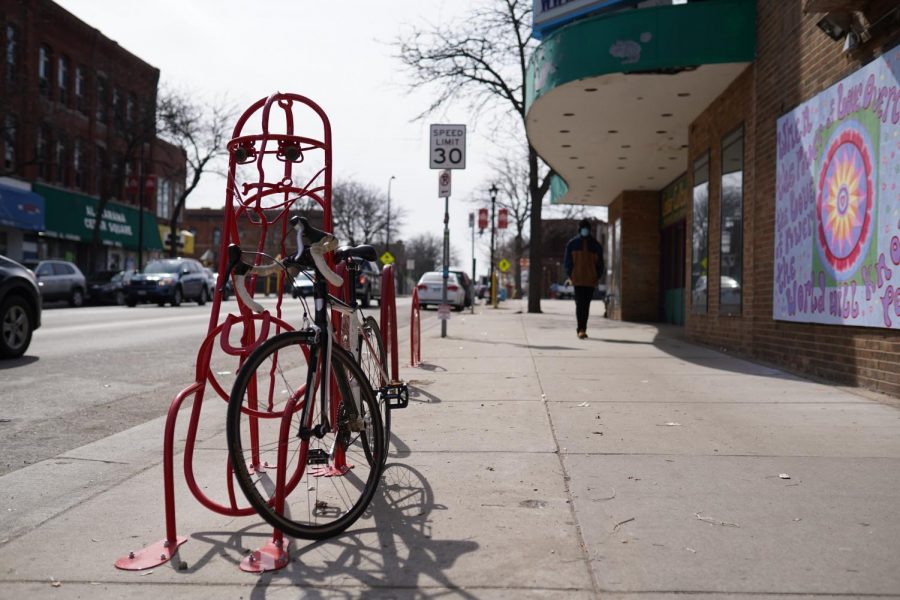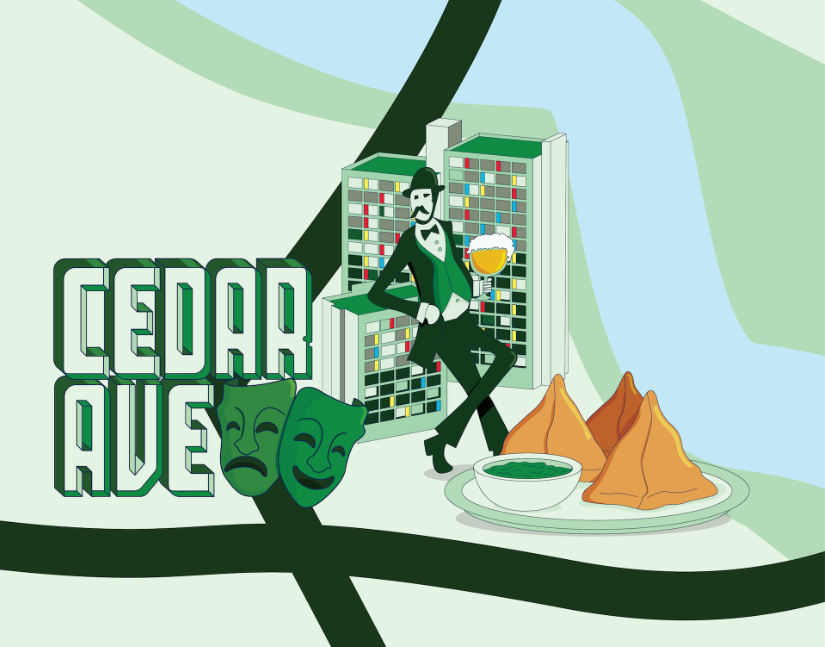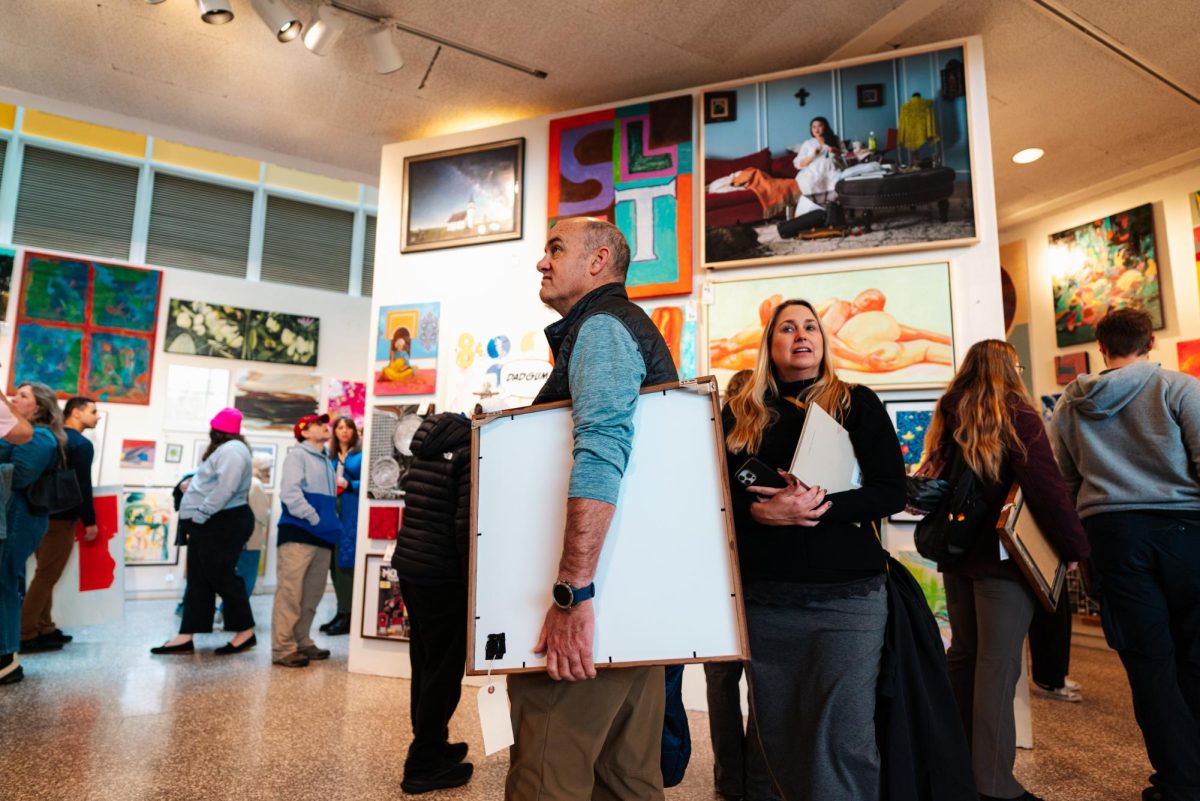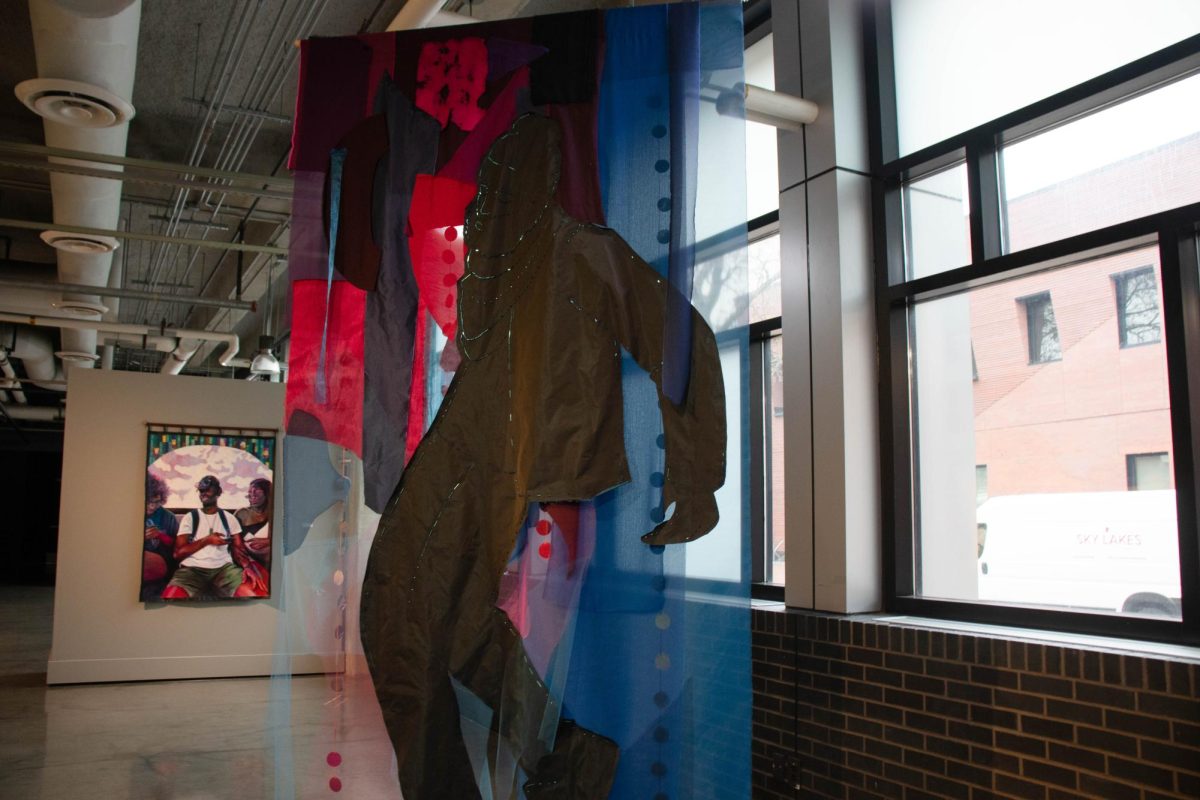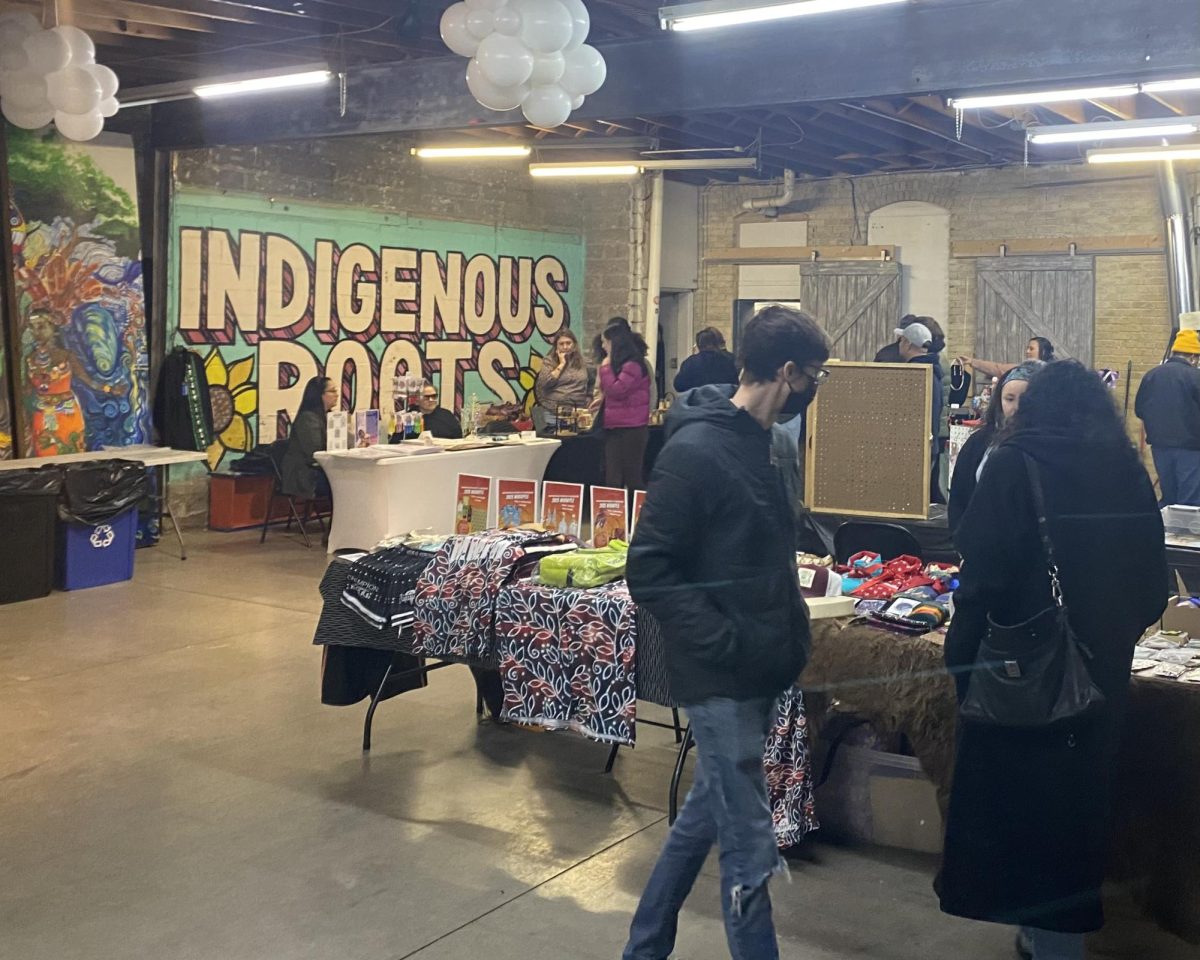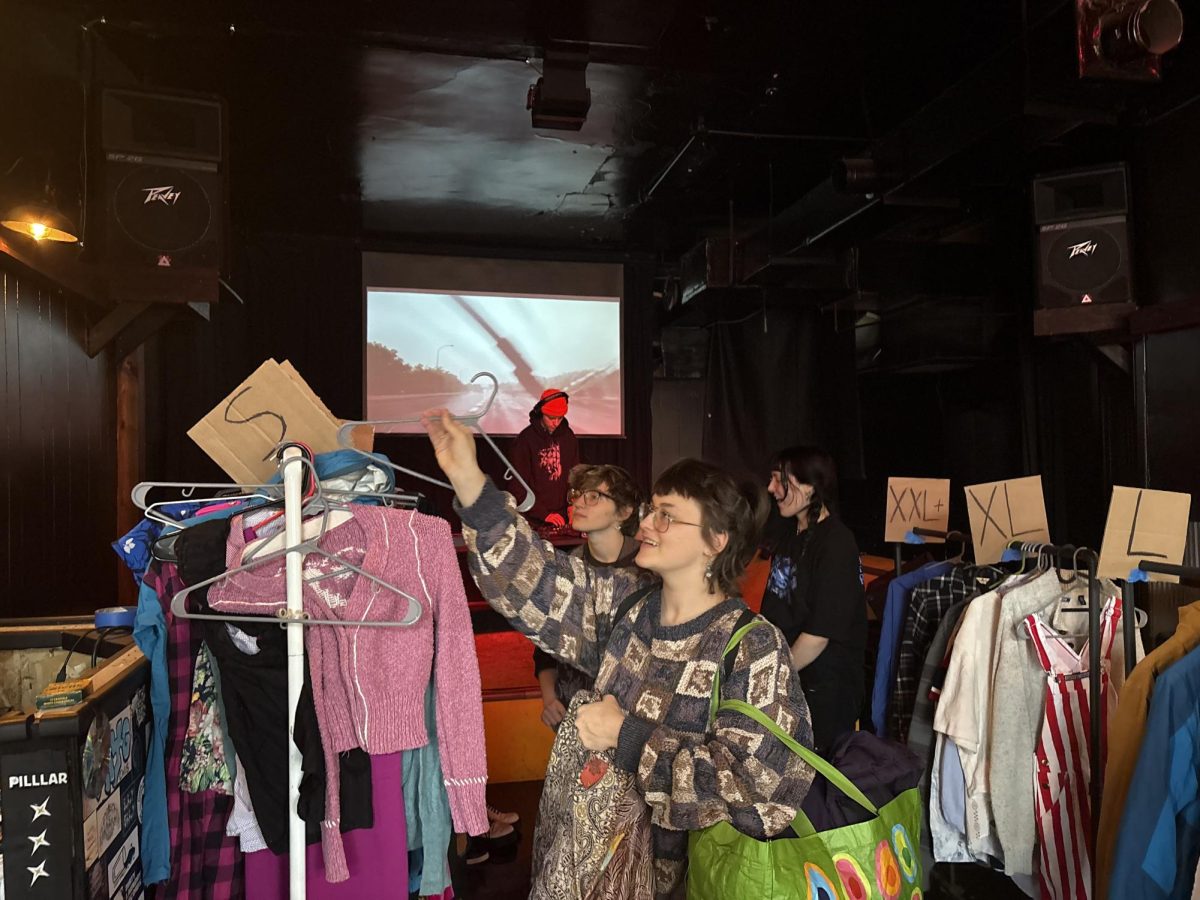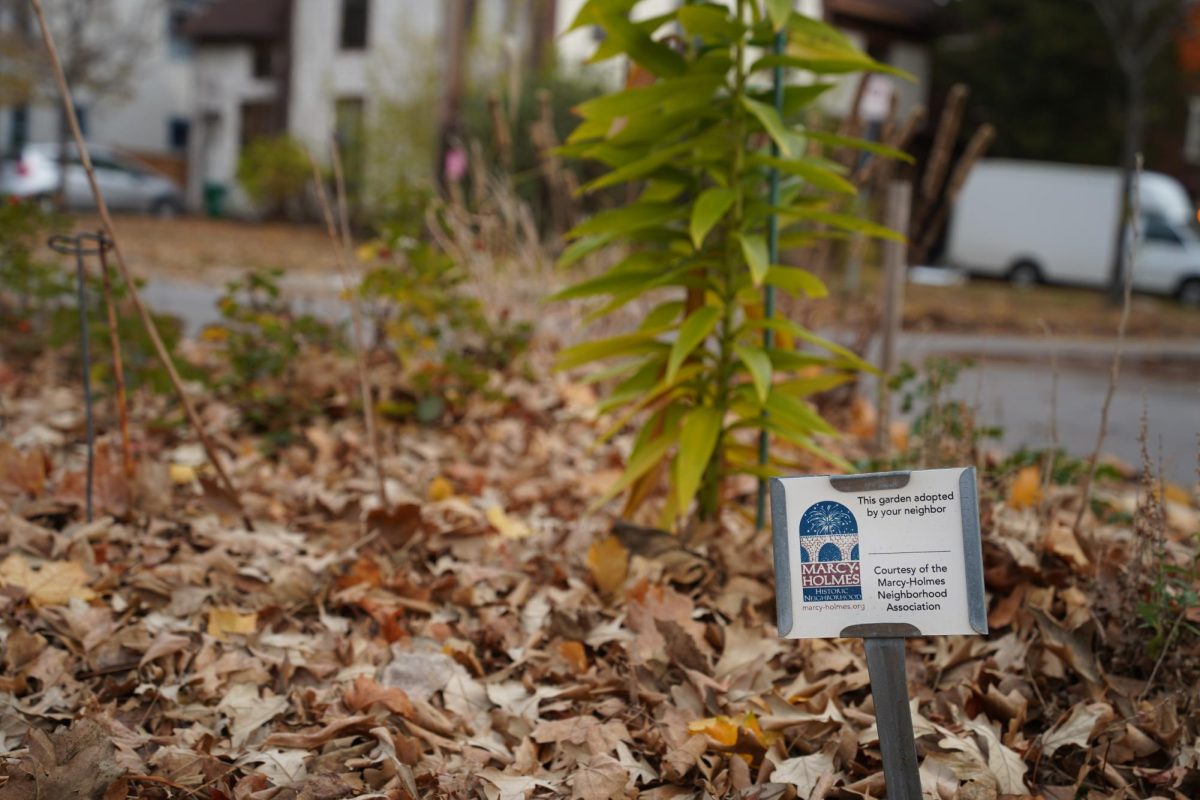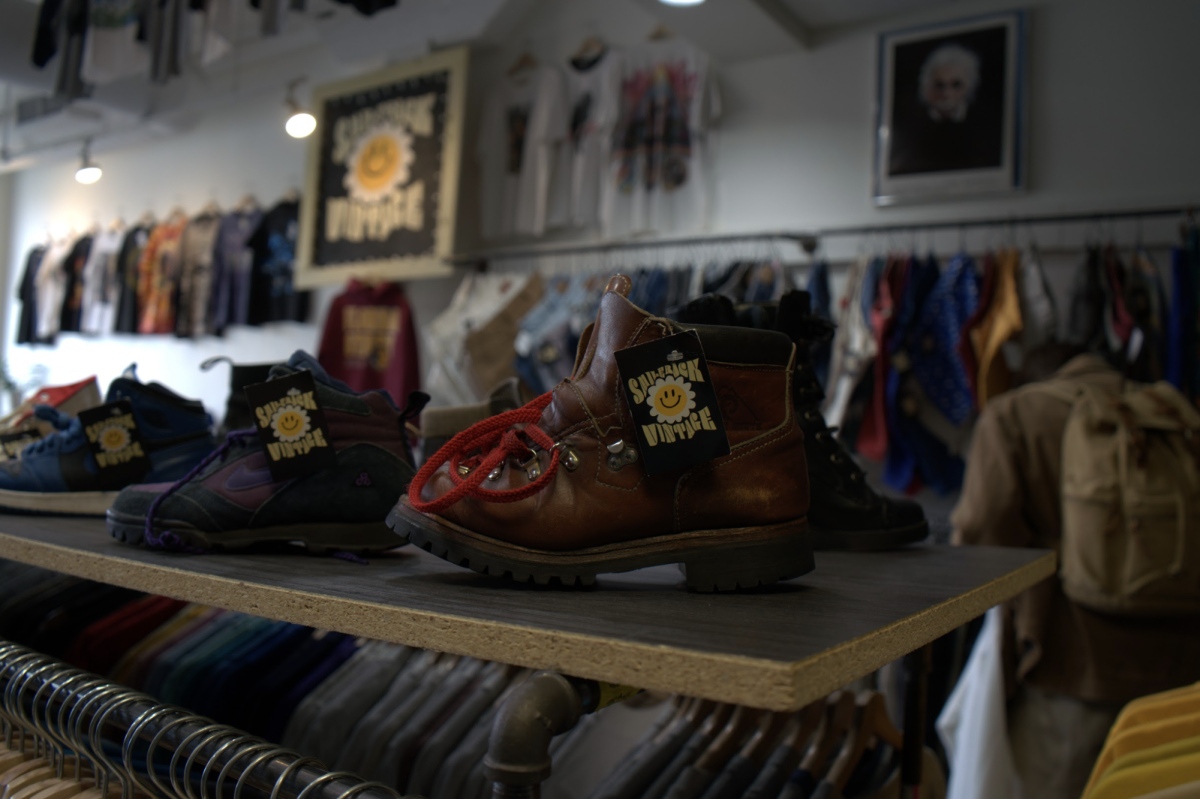There are some new bike racks in town, but they aren’t your average silver-colored, wave-shaped racks conventional to local riders.
An anthropomorphic hotdog outside the Wienery, a hissing black cat hiding behind the fence near the Hard Times Cafe, a life-sized metal man representing Palmer Bar’s key character — these sculptures and more are scattered around Cedar Avenue. The five new bike-racks-turned-public-art-pieces all over the West Bank offer locals creative street-side sculptures that operate as functional art.
Allen Christian, the sculptor and proprietor of House of Balls on the West Bank, is the man behind these zany new bike racks. Christian, known to some as Mr. Lucky, created five new racks for neighborhood businesses, including Keefer Court, Hard Times Cafe, the Wienery, the Cedar Cultural Center and Palmer’s Bar.
“Pretty much everything I work with is waste,” Christian explained. “So it’s really trying to take the detritus of our lives out of the waste treatment and create something out of it that, at least in my mind, has more value.”
Upon first glance, it’s hard to tell that the racks are composed of found electrical conduits, scrapyard pieces like steel, doorknobs and old tools. Now, after months of building, powder coating and waiting for the Minnesota snow to melt, the racks are on display and ready to use.
“I’d rather not call it functional art, but art that functions,” Christian said.
The endeavor to create artistic bike racks is a few years in the making. When Jamie Schumacher served as the executive director for the West Bank Business Association (WBBA), she applied for a grant with the University of Minnesota Good Neighbor Fund to begin this project. The grant enabled the WBBA to put artist-designed bike racks around the neighborhood, Schumacher said.
The idea was to create racks that were functional while also creating “a sense of place” for the West Bank neighborhood, she said. One major objective for this project, Schumacher added, was to bring in a local artist to create these racks. Christian, whose public art studio has been in the West Bank for six-and-a-half years, was the perfect person for the project.
Michelle Kwan, baker and manager of Keefer Court, grew up above the West Bank bakery. According to Kwan, the businesses that now are represented through Christian’s bike racks were neighborhood mainstays when she was growing up. The nearly 40-year-old bakery received its own custom-made bright yellow bike rack with lotus flowers and “Keefer Court” written in traditional Chinese characters.
“It’s cool to see that Keefer Court is part of the history of these [West Bank] businesses,” Kwan said.
The WBBA could have easily chosen to buy conventional bike racks for the community, but the decision to go beyond convention and function, creating interesting and quirky bike racks reflects the character of the historic neighborhood.
The West Bank and Cedar-Riverside neighborhood has a rich bike history. The Black Label Bike Club, a troupe of bikers that ride tall bikes around the city, was founded in the West Bank in the early ’90s. Christian said he sought to acknowledge the heavy presence of this unique method of transportation around the West Bank with the tall bike racks.
“The funky bike racks reflect our funky neighborhood,” KJ Starr, interim director of the West Bank Business Association and rider of high bikes, said. “Why waste an opportunity to put up public art that really is an identifier for our place?”
According to Starr, there’s been excitement brewing among the tall bike community about the installation of these racks. On her social media pages, she’s witnessed a friendly race among the bikers to be the first to lock up their tall bikes to one of the tall bike racks.
Schumacher said that the bike rack project is a prime example of catering public art to the community it serves.
“You could have things that are just purely functional,” Schumacher said, “It could just be the standard bike racks to get the job done. But when you have something that really takes into consideration the user, public art that connects with the community and connects with the folks that are using it, I think that to me is a successful example of what public art could be and what it should be.”


